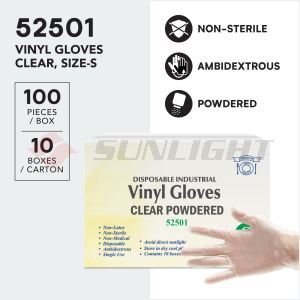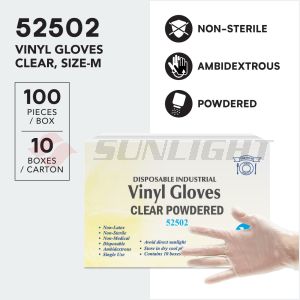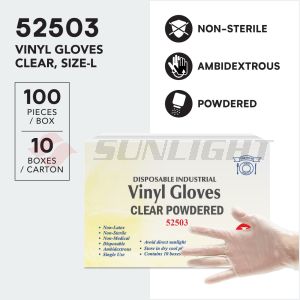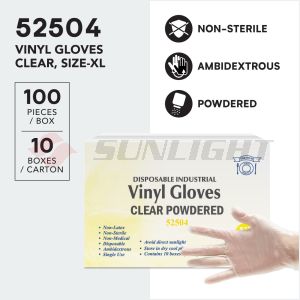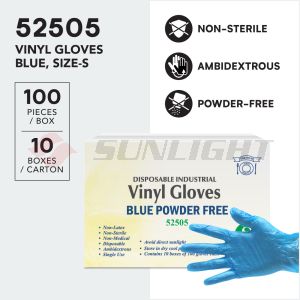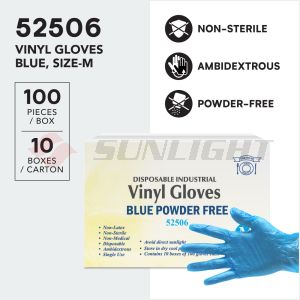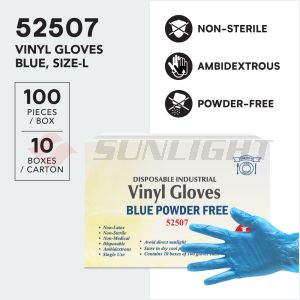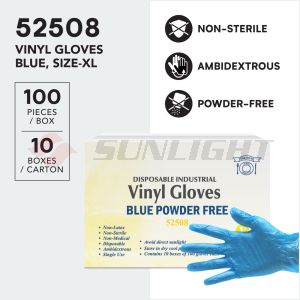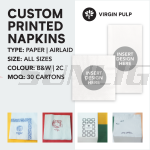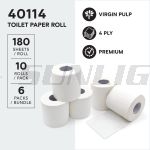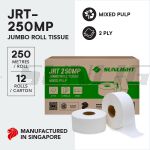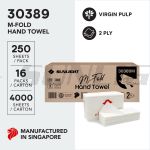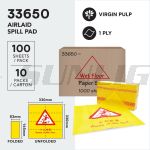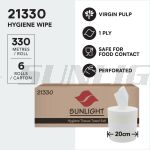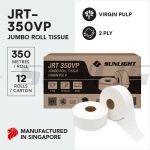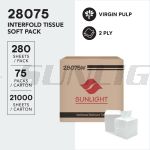Vinyl Gloves
VINYL GLOVES are made from PVC (polyvinyl chloride). They are one of the cheapest latex-free gloves.
Usage of Vinyl gloves:
| Vinyl | |
| General | ✔ |
| Food prep | ✔ |
| Cooking | ✔ |
| Counter tasks | ✔ |
| Dish washing | ✔ |
| Janitorial | ✔ |
| Exam | |
| High risk | |
| Power or powder-free | ✔ |
| Latex-free | ✔ |
About Vinyl gloves:
| Vinyl | |
|
Level of Barrier Protection (Resistant to punctures and tears) |
Poor |
|
Allergen Content (Contains protein and chemical allergen) |
Very Good No natural rubber proteins and no chemical curing agents |
|
Strength and Durability (High tensile strength) |
Poor |
|
Elasticity (High memory, allowing the film to always return to its original shape) |
Fair to Poor |
|
Fit and Comfort |
Fair |
|
Chemical Resistance (Protects from caustics and detergents) |
Fair |
|
Economical (Price point) |
Very Good |
Vinyl gloves summarized:
- Pros: Low cost, comfortable fit, and latex-free, making them suitable for people with latex allergies.
- Cons: Lower durability, less form-fitting, and not suitable for tasks requiring high tactile sensitivity or protection from harsh chemicals.
- Commonly used in: Food service and catering, beauty and salon, cleaning and janitorial, retail and customer service, light healthcare applications
- Ranking: #2 for affordability and general-purpose use.
Vinyl Glove selection ranges from clear to blue, powdered to powder-free.
View the link below for the full summary of the 2 types of gloves we offer:
Here is a 5-step instruction guide on how to use the glove right:
1) Choose a glove size that fits well and is designed for your intended use
2) Check if there are any rips or punctures
3) Always wash and dry your hands before putting on a pair of gloves
4) Never wash or reuse disposable gloves
5) Remove your gloves from the outside and be sure to wash your hands!
You may consider another type of gloves: Nitrile gloves
For other tissue andhygiene products, check out our range of Jumbo Roll Tissue, Paper Hand Towel and Garbage Bags. (hyperlink to other category pages)

